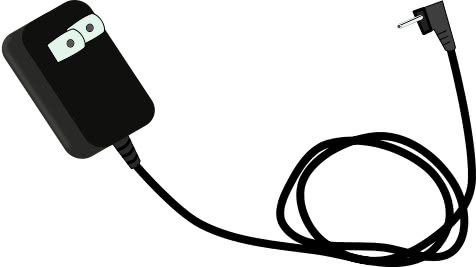 The building trade war between the US and China over subsidies to solar panel makers is heating up further still, with China launching its own anti-dumping investigation against US firms in a clear retaliatory move for a similar ongoing US investigation. Amid all this latest wrangling in Beijing and Washington, major industry players are announcing a new wave of specific and potential plans to build new production bases in the West and emerging markets, indicating people are starting to feel a bit uneasy with the dominant slice that China has taken of the market. First let’s look at the latest development in Beijing, which has seen China’s Commerce Ministry launch an investigation into government subsidies for US solar panel makers. (English article) I won’t even begin to comment on the absurdity of such an investigation, as a big portion of US solar panel makers are no longer in business after many were forced into bankruptcy this year as the sector struggles through its worst-ever downturn amid huge overcapacity. For that same reason, any punitive tariffs by China probably wouldn’t have much effect, since there aren’t many US solar panel makers left to punish and China hasn’t built many solar power plants to date anyhow. But the tone in the debate is certainly counterproductive if nothing else, and the two sides should sit down and try to work out a solution that everyone can live with rather than engaging in this kind of angry rhetoric. Meantime, Japan’s Panasonic (Tokyo: 6752) has just announced a plan to spend more than $500 million to build a major new solar panel production base in Malaysia. (company announcement) I’m not sure if the world needs another major new solar panel plant right now; but that move, combined with recent comments by LDK (NYSE: LDK) and other China manufacturers that they may build new plants outside China to avoid US punitive tariffs, show that the industry is clearly concerned about too much concentration of its resources in China and wants to diversify its production to other markets. Those kinds of moves could help to diffuse this crisis, though Beijing and Washington will also need to show a bit more willingness to work together to iron out their differences to avoid a counterproductive trade war that could really hurt the development of the alternate energy sector.
The building trade war between the US and China over subsidies to solar panel makers is heating up further still, with China launching its own anti-dumping investigation against US firms in a clear retaliatory move for a similar ongoing US investigation. Amid all this latest wrangling in Beijing and Washington, major industry players are announcing a new wave of specific and potential plans to build new production bases in the West and emerging markets, indicating people are starting to feel a bit uneasy with the dominant slice that China has taken of the market. First let’s look at the latest development in Beijing, which has seen China’s Commerce Ministry launch an investigation into government subsidies for US solar panel makers. (English article) I won’t even begin to comment on the absurdity of such an investigation, as a big portion of US solar panel makers are no longer in business after many were forced into bankruptcy this year as the sector struggles through its worst-ever downturn amid huge overcapacity. For that same reason, any punitive tariffs by China probably wouldn’t have much effect, since there aren’t many US solar panel makers left to punish and China hasn’t built many solar power plants to date anyhow. But the tone in the debate is certainly counterproductive if nothing else, and the two sides should sit down and try to work out a solution that everyone can live with rather than engaging in this kind of angry rhetoric. Meantime, Japan’s Panasonic (Tokyo: 6752) has just announced a plan to spend more than $500 million to build a major new solar panel production base in Malaysia. (company announcement) I’m not sure if the world needs another major new solar panel plant right now; but that move, combined with recent comments by LDK (NYSE: LDK) and other China manufacturers that they may build new plants outside China to avoid US punitive tariffs, show that the industry is clearly concerned about too much concentration of its resources in China and wants to diversify its production to other markets. Those kinds of moves could help to diffuse this crisis, though Beijing and Washington will also need to show a bit more willingness to work together to iron out their differences to avoid a counterproductive trade war that could really hurt the development of the alternate energy sector.
Bottom line: China’s launch of an unfair subsidy investigation against US solar firms is a counterproductive move that won’t do anything to help settle a growing trade war over the matter.
Related postings 相关文章:
◙ Solar Slips Squarely Into the Red 太阳能行业陷入全线亏损
◙ Beijing, Yingli Send Mixed Solar Signals 英利和中国政府似乎“背道而驰”
◙ New Solar Signals: Slowdown Easing Amid Writedowns 太阳能企业减计库存 行业或将开始摆脱危机

 China’s formerly red-hot auto market looks set to stall this year, but you would never know that from looking at luxury car sales. The only problem from a domestic investor’s point of view is that the market is almost completely monopolized by foreign firms, Germans in particular. The country’s 3 top luxury car sellers, Volkswagen’s (Frankfurt: VOWG) Audi, BMW (Frankfurt: BMW) and Mercedes-Benz (Frankfurt: DAI) all saw their China sales rise 30 percent or more in the first 10 months of this year. (
China’s formerly red-hot auto market looks set to stall this year, but you would never know that from looking at luxury car sales. The only problem from a domestic investor’s point of view is that the market is almost completely monopolized by foreign firms, Germans in particular. The country’s 3 top luxury car sellers, Volkswagen’s (Frankfurt: VOWG) Audi, BMW (Frankfurt: BMW) and Mercedes-Benz (Frankfurt: DAI) all saw their China sales rise 30 percent or more in the first 10 months of this year. ( Leading B2B e-commerce platform Alibaba.com (HKEx: 1688) has become skilled at putting out its results during times when the least people are watching, as it aims to deflect investor attention from the fact that its profit growth is following a worrisome shrinking pattern. It released its first quarter results in May at the height of its headline-making spat with 40 percent stakeholder Yahoo (Nasdaq: YHOO), and now it has just released an extremely lackluster third-quarter report over the US Thanksgiving holiday, when New York markets are closed and most investors are unlikely to see the results when they get back to work next week. (
Leading B2B e-commerce platform Alibaba.com (HKEx: 1688) has become skilled at putting out its results during times when the least people are watching, as it aims to deflect investor attention from the fact that its profit growth is following a worrisome shrinking pattern. It released its first quarter results in May at the height of its headline-making spat with 40 percent stakeholder Yahoo (Nasdaq: YHOO), and now it has just released an extremely lackluster third-quarter report over the US Thanksgiving holiday, when New York markets are closed and most investors are unlikely to see the results when they get back to work next week. ( I wrote 3 weeks ago that Apple (Nasdaq: AAPL) had overlooked China in the global roll-out for its newest iPhone, the 4S (
I wrote 3 weeks ago that Apple (Nasdaq: AAPL) had overlooked China in the global roll-out for its newest iPhone, the 4S ( It’s Thanksgiving day in the US, but people in China’s turbulent group buying sector have little to be thankful for, as intense competition appears to have claimed a new victim in the form of a sub-site operated by 24quan. (
It’s Thanksgiving day in the US, but people in China’s turbulent group buying sector have little to be thankful for, as intense competition appears to have claimed a new victim in the form of a sub-site operated by 24quan. ( Just weeks after getting regulatory approval for its purchase of leading hot pot chain Little Sheep (HKEx: 968), KFC parent Yum Brands (NYSE: YUM) is making headlines once again for yet another tie-up, this time with Sinopec (HKEx: 386; NYSE: SNP), China’s top oil refiner. (
Just weeks after getting regulatory approval for its purchase of leading hot pot chain Little Sheep (HKEx: 968), KFC parent Yum Brands (NYSE: YUM) is making headlines once again for yet another tie-up, this time with Sinopec (HKEx: 386; NYSE: SNP), China’s top oil refiner. ( It seems like barely a day goes by lately without state media singing the latest praises of microblogging, a development which could bode well for dominant player Weibo but which could also hold risks if Beijing decides this popular form of social networking is too important to leave to organic development in the hands of private developers. Followers of Weibo, often called the Twitter of China, will recall that the platform was the source of criticism by state media for much of the first half of the year, which blamed it for spreading rumors from users who could hide behind cloaks of anonymity. One official even came out as recently as last month and suggested that all microblog users might have to register with their real names, a development that would have sent a huge chill through networks like Weibo and other services operated by names like NetEase (Nasdaq: NTES). (
It seems like barely a day goes by lately without state media singing the latest praises of microblogging, a development which could bode well for dominant player Weibo but which could also hold risks if Beijing decides this popular form of social networking is too important to leave to organic development in the hands of private developers. Followers of Weibo, often called the Twitter of China, will recall that the platform was the source of criticism by state media for much of the first half of the year, which blamed it for spreading rumors from users who could hide behind cloaks of anonymity. One official even came out as recently as last month and suggested that all microblog users might have to register with their real names, a development that would have sent a huge chill through networks like Weibo and other services operated by names like NetEase (Nasdaq: NTES). ( Just months after losing its top executive to a rival in one of the period shuffles at the top of China’s major state-run industries, CNOOC (HKEx: 883; NYSE: CEO) is replacing its CEO after two major setbacks that have proven not only embarrassing but also hurt the company’s bottom line. The shuffle, which will see executive director Li Fanrong take over from Yang Hua (
Just months after losing its top executive to a rival in one of the period shuffles at the top of China’s major state-run industries, CNOOC (HKEx: 883; NYSE: CEO) is replacing its CEO after two major setbacks that have proven not only embarrassing but also hurt the company’s bottom line. The shuffle, which will see executive director Li Fanrong take over from Yang Hua (